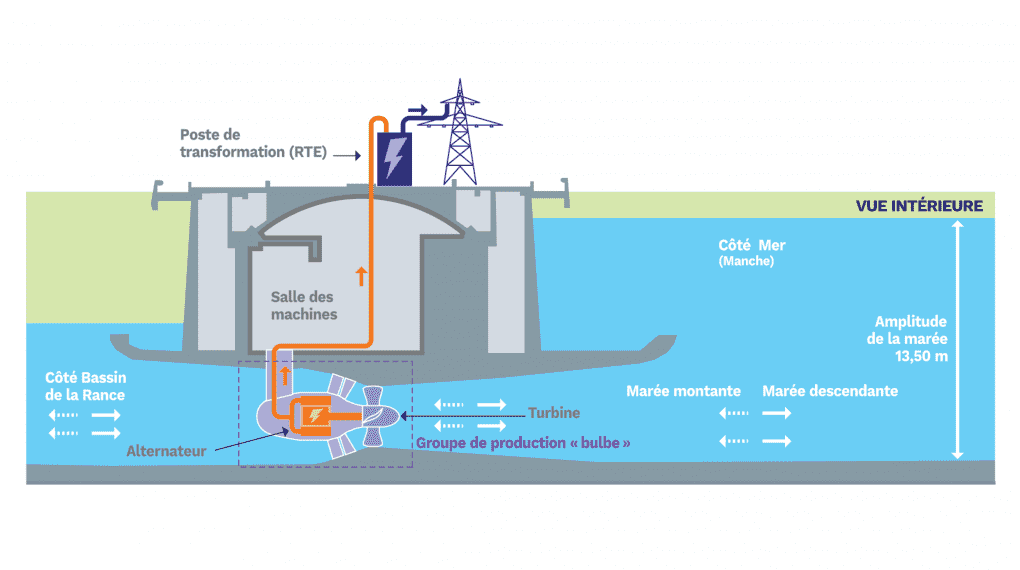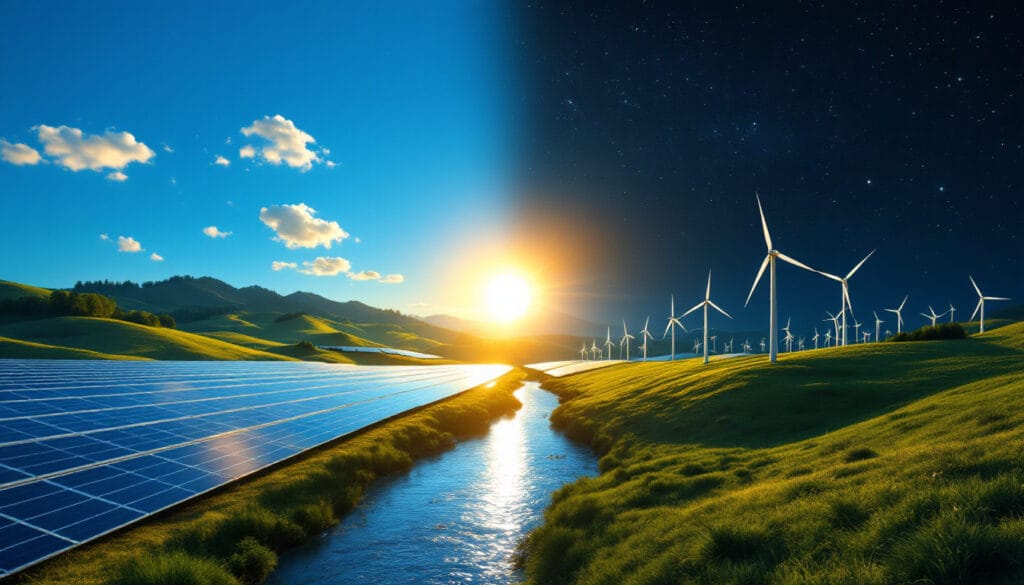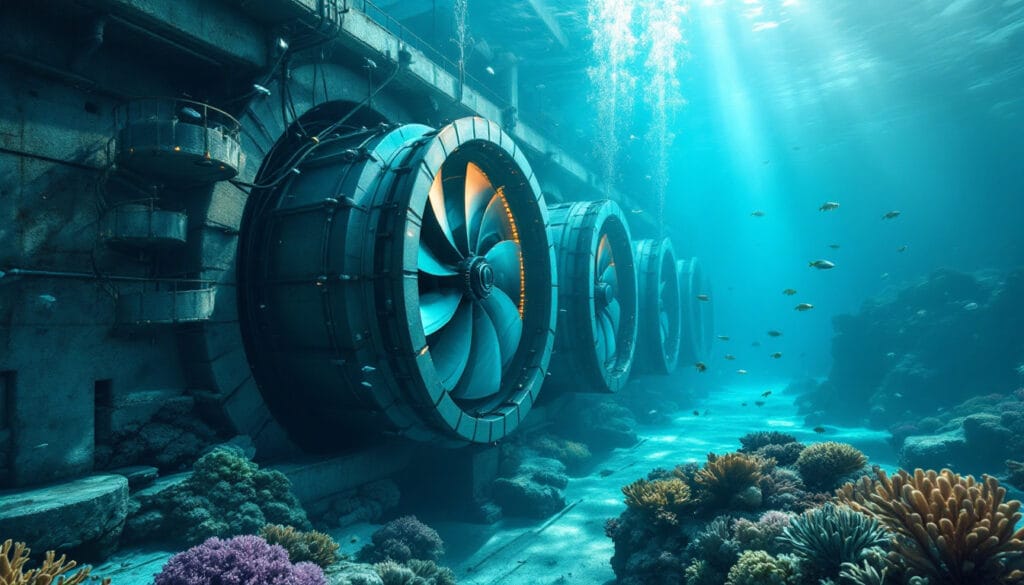Tidal power plants, fascinating and innovative, harness the power of tides to produce electricity sustainably. Through a clever system of dams and turbines, they capture the kinetic energy generated by the upward and downward movement of water masses. This phenomenon is orchestrated by the gravitational forces of the Moon and the Sun. The Rance tidal power station, an iconic example, takes advantage of the tidal range, the difference in height between high tide and low tide, to generate electricity that is both reliable and environmentally friendly. These plants reveal a potential for renewable energy that is still underutilized, yet incredibly inspiring for lovers of green technologies.
A tidal power plant is a facility designed to convert tidal energy into electricity. It harnesses the water movements caused by tides, resulting from the gravitational forces exerted by the Moon and, to a lesser extent, by the Sun.
The operating principle of a tidal power plant relies on the tidal range, which is the difference in height between high tide and low tide. A typical tidal power plant consists of a dam equipped with turbines. The turbines are driven by the movement of water as it flows between two distinct levels, thus producing electricity.
The best-known model in France is the Rance tidal power station. This plant has the particularity of being able to produce electricity when the tide rises, but also when it falls. This bidirectional operation enhances efficiency and maximizes energy production.
The advantages of tidal energy are significant. It is a renewable and clean energy source, helping to reduce our dependency on fossil fuels and decreasing greenhouse gas emissions. Moreover, tidal energy offers predictable production based on tidal cycles, unlike wind and solar energy, which depend on weather conditions.
However, tidal power plants also have disadvantages. Their construction can impact local ecosystems, particularly by altering marine habitats and natural currents. Furthermore, the initial construction cost is generally high, although operating costs are lower afterward.
The development of tidal power plants worldwide remains limited, primarily due to these economic and environmental constraints. However, there is a huge untapped potential, especially in coastal areas with significant tidal ranges.
Internationally, companies like Tidal Lagoon Power Ltd are interested in harnessing tidal energy. They are constantly seeking to optimize technologies and reduce environmental impacts to make this form of energy more attractive and viable.
In summary, a tidal power plant utilizes the natural movements of tides to produce clean and renewable electricity. Although facing certain challenges, it offers promising energy potential for a more sustainable future. Such facilities, if optimized, can play a key role in the transition to more environmentally friendly energy systems.

FAQ – Understanding the Tidal Power Plant
Q: What is a tidal power plant?
A: A tidal power plant is a facility that produces electricity using renewable energy from tides. It harnesses the phenomenon of tidal range, which is the difference in height between high tide and low tide.
Q: How does tidal energy work?
A: Tidal energy works through the water movements created by tides. These movements, generated by the gravitational force of the Moon and the Sun, are captured by dams and turbines to produce electricity.
Q: What is special about the Rance tidal power station?
A: The Rance tidal power station is unique because it can produce electricity when the tide falls, as well as when it rises, utilizing both opposing movements to drive its turbines.
Q: What are the main components of a tidal power plant?
A: The main components of a tidal power plant primarily include a dam, turbines, and electrical generators that convert the kinetic energy of tides into electricity.
Q: What are the advantages of tidal energy?
A: Tidal energy has the advantage of being a renewable and low-pollution energy source, offering constant and predictable production due to the regular cycles of tides.
Articles similaires
Thank you!
We will contact you soon.













